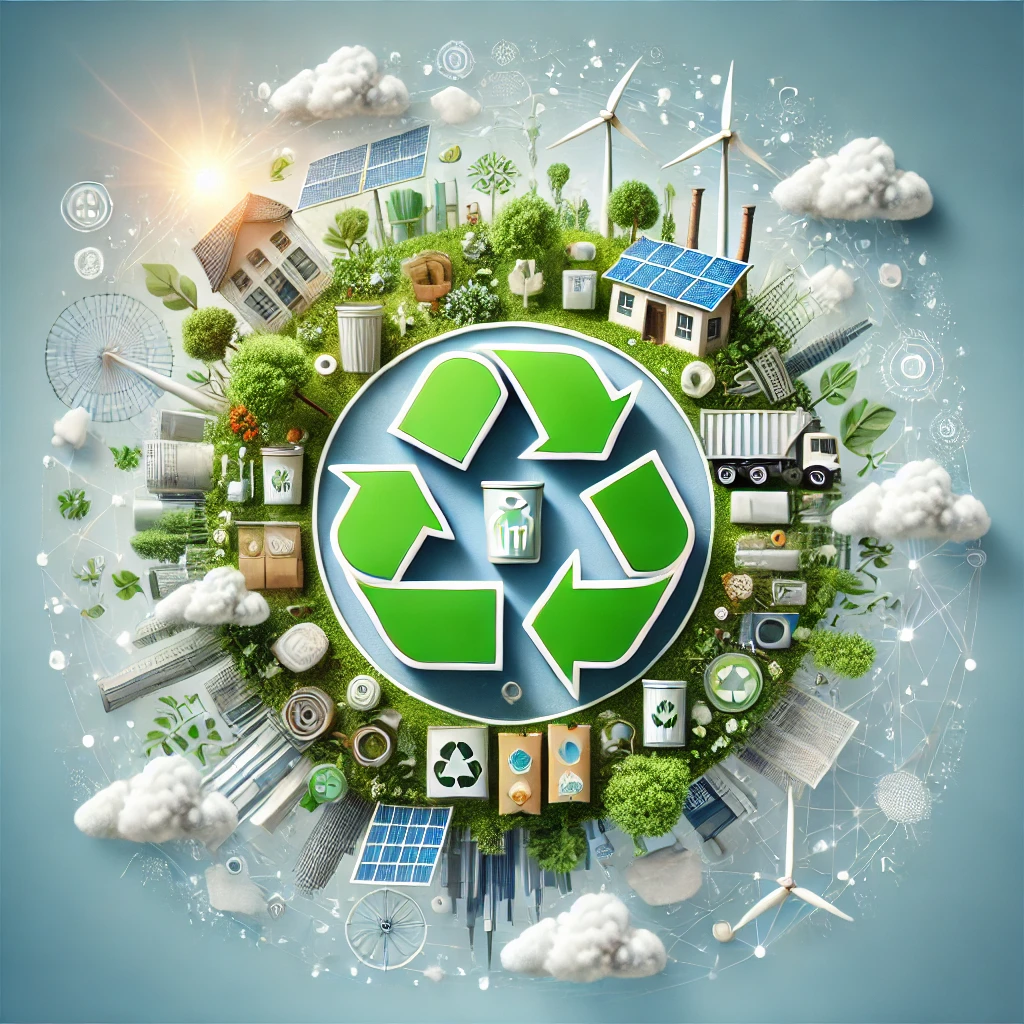
The Circular Economy: How It Can Solve Our Waste Problem
Welcome to the world of sustainability! Let's dive into how the circular economy offers groundbreaking solutions to our growing waste problem. With renewable energy insights, energy-efficient innovations, and more, we are entering an era of sustainable living that can shape a better tomorrow.
What is the Circular Economy?
The circular economy is a transformative concept that aims to reduce waste and maximize the use of resources. Unlike the traditional linear economy—where products are made, used, and disposed of—the circular economy encourages reusing, recycling, and regenerating materials, ensuring that nothing goes to waste.
The Key Principles of the Circular Economy
- Designing for longevity: Products are built to last, with easy repair and upgrade options.
- Maintaining the value of products and materials: Reusing, repairing, and recycling keeps materials in the economy longer.
- Fostering systems thinking: A holistic approach that sees the entire product lifecycle and its impact on the environment.
How the Circular Economy Tackles Our Waste Problem
Our planet is drowning in waste, and the traditional “take, make, dispose” model isn’t cutting it anymore. By shifting to a circular economy, we can tackle this problem head-on. Here’s how:
Reducing Landfill Waste with Renewable Energy
Renewable energy insights are reshaping how we handle waste. Solar power for homes, for example, is a clean and renewable way to reduce reliance on traditional energy sources, which are often linked to pollution. By investing in energy-efficient appliances and other green technologies, we can minimize waste production right from the start.
How Recycling and Upcycling Can Make a Difference
Imagine turning an old pair of jeans into a stylish bag or repurposing a broken smartphone into a chic desk lamp. That’s the magic of recycling and upcycling! These practices help reduce the strain on landfills and keep materials circulating in the economy, preventing valuable resources from being wasted.
Renewable Energy Insights and Climate Change Solutions
Climate change is one of the biggest challenges we face today. By embracing the circular economy, we’re not just solving the waste problem—we’re also addressing climate change. Renewable energy sources like wind and solar power are integral in reducing carbon footprints. As we transition to energy-efficient innovations, we begin to see the massive impact that these technologies can have on both our planet and our way of life.
Solar Power for Homes: The Future of Clean Energy
Solar power for homes is one of the most practical and effective ways to combat waste and reduce energy consumption. With solar panels, you can generate your own electricity, reducing the need for fossil fuels and lowering your carbon footprint. Plus, with advancements in solar technology, it’s becoming easier and more affordable to integrate solar power into your home.
Best Electric Vehicles 2025: A New Era in Sustainable Transportation
The electric vehicle (EV) revolution is here. The best electric vehicles for 2025 are offering not only incredible fuel efficiency but also eco-friendly features that make them perfect for those living a sustainable lifestyle. EVs are one of the most effective ways to reduce transportation-related emissions and waste.
Sustainable Living Tips: How You Can Contribute
Living sustainably doesn’t have to be hard—it’s about making small, intentional choices every day. Here are a few sustainable living tips that can make a big impact:
How to Live a Zero-Waste Lifestyle
Are you tired of throwing away mountains of plastic? Living a zero-waste lifestyle means reducing your waste to as close to zero as possible by avoiding single-use plastics, reusing materials, and composting organic waste. Not only does this help the environment, but it also reduces the strain on our already overwhelmed waste systems.
Energy-Efficient Appliances: A Smart Investment for Your Home
When it comes to reducing waste, your home is a great place to start. Energy-efficient appliances, from refrigerators to washing machines, are designed to consume less power while still performing at a high level. Not only do these appliances save you money in the long run, but they also contribute to reducing the overall demand for energy and resources.
Top Green Building Techniques: Building a Sustainable Future
Building a home with sustainability in mind is no longer a luxury—it’s a necessity. From using eco-friendly materials to incorporating energy-efficient designs, there are plenty of ways to build green. Top green building techniques include:
Insulation and Passive Heating
One of the best ways to reduce energy consumption is by using proper insulation and taking advantage of passive heating. By positioning windows and doors to maximize natural light and heat, homes can stay warm in the winter without relying on excessive energy use.
Green Roofs and Solar Panels
More and more homes are adopting green roofs and solar panels to improve energy efficiency. Green roofs not only provide insulation but also help filter rainwater and reduce urban heat island effects. Solar panels, on the other hand, provide a clean, renewable energy source for your home.
How the Circular Economy is Shaping the Future
The circular economy isn’t just about waste reduction; it’s about creating a sustainable future. By integrating renewable energy, sustainable living tips, and cutting-edge green technologies, we are building a new world where waste is minimized, resources are used efficiently, and our planet can thrive.
The Role of Innovation in Sustainability
Innovation is key to the success of the circular economy. From developing energy-efficient innovations to discovering new recycling methods, these breakthroughs are pushing us toward a more sustainable future. Green technology reviews often highlight exciting new advancements that promise to change the way we live.